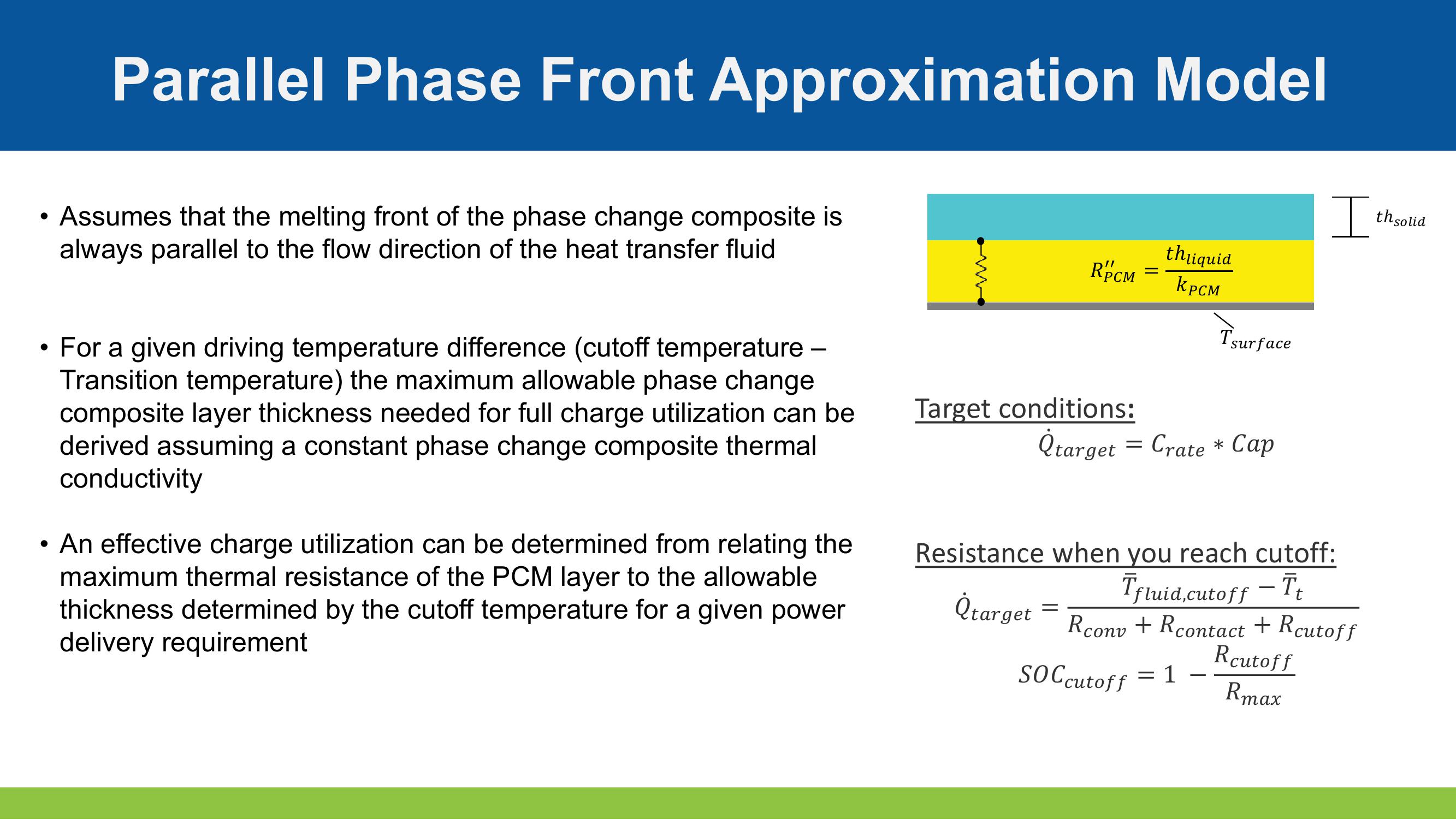Optimizing Design and Controls for Thermal Energy Storage
Parallel Phase Front Approximation Model
Assumes that the melting front of the phase change composite is
always parallel to the flow direction of the heat transfer fluid
I'
th solid
thliquid
RPCM =
Крсм
surface
• For a given driving temperature difference (cutoff temperature -
Transition temperature) the maximum allowable phase change
composite layer thickness needed for full charge utilization can be
derived assuming a constant phase change composite thermal
conductivity
•
An effective charge utilization can be determined from relating the
maximum thermal resistance of the PCM layer to the allowable
thickness determined by the cutoff temperature for a given power
delivery requirement
Target conditions:
Qtarget = Crate * Cap
Resistance when you reach cutoff:
Qtarget
Tfluid,cutoff - Tt
Rconv + Rcontact + Rcutoff
Rcutoff
SOC cutoff
= 1
-
RmaxView entire presentation